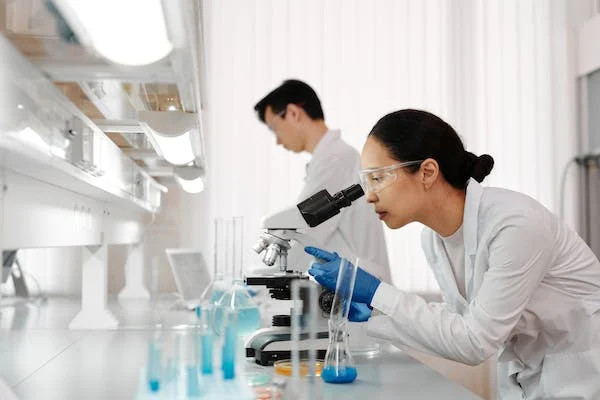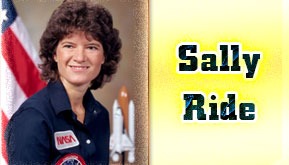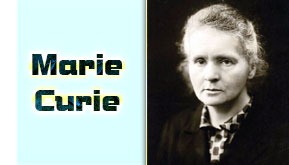Most fields and industries – be it science, technology, business, or arts – are dominated by men. While THE contributions of men abound, the world of science wouldn’t be the same without the works of the pioneering women scientists.
 1. Sally Ride
1. Sally Ride
As the first American woman to fly in space, Sally Ride chose to be where her female peers do not consider being. Being a pioneering woman in NASA, she was subject to media attention, receiving questions like “How do you think your female organs would respond to the space environment?” and “Do you get moody when things don’t go right?” She was a mission specialist and scientist for NASA. She was also the first woman to use the robot arm in space and to use it to retrieve a satellite.
After her career in NASA, Ride became a professor of physics and director of the California Space Institute at the University of California, San Diego. She exerted tremendous efforts to advance science education to make science exciting for the young generation.
 2. Marie Curie
2. Marie Curie
Marie Curie was a Polish-French chemist and physicist who pioneered in the field of radiation research. Curie was the first and only woman to win a Nobel Prize award in two different categories: chemistry and physics. When she cannot enter the men-only university in Warsaw, she studied in an underground school. She eventually made her way to Paris to study and met Pierre Curie when she was working in a laboratory.
Marie, together with her husband Pierre, discovered a radioactive elements radium and polonium. Marie also contributed to the development of X-rays for use in the medical field.
3. Rosalind Franklin
Some notable works of scientists were surrounded by controversies, and Rosalind Franklin’s was one of them. British chemist Franklin was known for her role in the discovery of the DNA structure, but other scientists used her work as an evidence to support their own DNA model and took credit for her discovery.
When she worked at John Randall’s laboratory at King’s College, London, she crossed paths with Maurice Wilkins. Both of them led separate research groups but both studies were concerned with DNA. Franklin, together with her student, studied DNA structure with X-ray diffraction and discovered critical evidence in identifying DNA structure. Her famous Photograph 51 was considered “the most beautiful X-ray photographs of any substance taken.” However, when Wilkins disclosed the Photo 51 to a competing scientist named James Watson without permission or the knowledge of Franklin, they used it as the basis for their famous DNA model, for which they have received a Nobel Prize in 1962.
4. Ada Lovelace
Augusta Ada Byron, or simply known as Ada Lovelace, was an English mathematician and writer who became the world’s first computer programmer. She was a teenager when she met mathematics professor Charles Babbage, who was later known as the father of computers. Babbage invented the Difference Engine, the mechanical computer designed to create mathematical tables automatically with no errors. However, the engine – as well as his second project, the Analytical Engine –was never built due to lack of financing.
Lovelace corresponded with Babbage for years. She was commissioned to translate into English a French article about Babbage’s Analytical Engine and added her own notes to the lecture. Her translation, which was published in 1843, ended up being thrice as long as the actual transcript, making it clear that she understood the theoretical machine, as well as Babbage, does. Her elaborate paper showed how the machine can be programmed with a code to calculate Bernoulli numbers – thus creating the first algorithm and the first computer program. Her accomplishments in mathematics made her a pioneer of not only computer programming, but of women in science.
5. Jane Goodall
Jane Goodall is a legendary primatologist who studied primates by immersing herself in the world of wild chimpanzees in Tanzania. Some people think she inspired the character “Jane” from the story Tarzan of the Apes, but Tarzan was actually her inspiration to pursue a life of studying animals, jokingly saying “Tarzan married the wrong Jane.”
As she dwelt with the Tanzanian chimps, Goodall discovered that they have a complex social system and discernible communication methods. When ethologists believed that chimps were vegetarians, she saw them eating meat by killing large insects, birds, and some bigger animals. When people believed tool making was an exclusively human ability, she witnessed chimps using grass as a spoon to eat termites and using stones as a weapon. Her works concluded that primates are very much like humans.
6. Katherine Johnson
As a girl who loved to count when she was a child, Katherine Johnson grew up to become one of NASA’s “human computers” in the 1950s. She calculated the trajectory for the first American in space, did the math for the manned Mercury mission into orbit around the Earth, and contributed to the success of the Apollo Moon landing program with her math talent. She was invaluable to the space program, and was a pioneer for black American women – at a time when segregation restricted jobs available for African Americans, let alone women.
Johnson was a prodigy. She was accelerated as she graduated high school at 14 years old, and college at 18, while other African Americans normally stopped at eighth grade. In 2015, she received the highest civilian award in the United States, the Presidential Medal of Freedom, from President Barack Obama.
7. Rosalyn Yalow
One of the most important research scientists in the 20th century America, Rosalyn Yalow developed radioimmunoassay (RIA), a technique used for studying hormones. The RIA diagnostic process had been, and is continued to be, used in a number of medical applications such as: screening blood for hepatitis virus, differentiating between type 1 and type 2 diabetes, detecting foreign substances in blood, determining effective dosage levels for drugs and antibiotics, testing correct hormone levels in infertile couples, and treating dwarfed children.
Yalow developed the RIA with her lab partner Solomon Berson, but they refused to patent the method so that more people can be able to use the technology. She was the first woman to be awarded the Albert Lasker Prize for Basic Medical Research and the prestigious Nobel Prize in Physiology or Medicine.
8. Chien-Shiung Wu
Chien-Shiung Wu was a Chinese physicist and a professor from the Columbia University. She was dubbed as “The First Lady of Physics” and “The Queen of Nuclear Research.” She worked with the Manhattan Project during World War II where she helped discover how to enrich uranium ore to fuel nuclear bombs.
Her famous Wu experiment invalidated the Law of Conservation of Parity, a quantum mechanics law stating that two physical systems are mirror images that behave identically. Although she was the one who conducted the experiment, the idea was brought up by two male physicists who eventually won the Nobel Prize for the discovery. However, she won numerous accolades throughout her career, as she became the first recipient of the Wolf Prize in Physics and the first woman to receive the Research Corporation Award.

 1. Sally Ride
1. Sally Ride 2. Marie Curie
2. Marie Curie